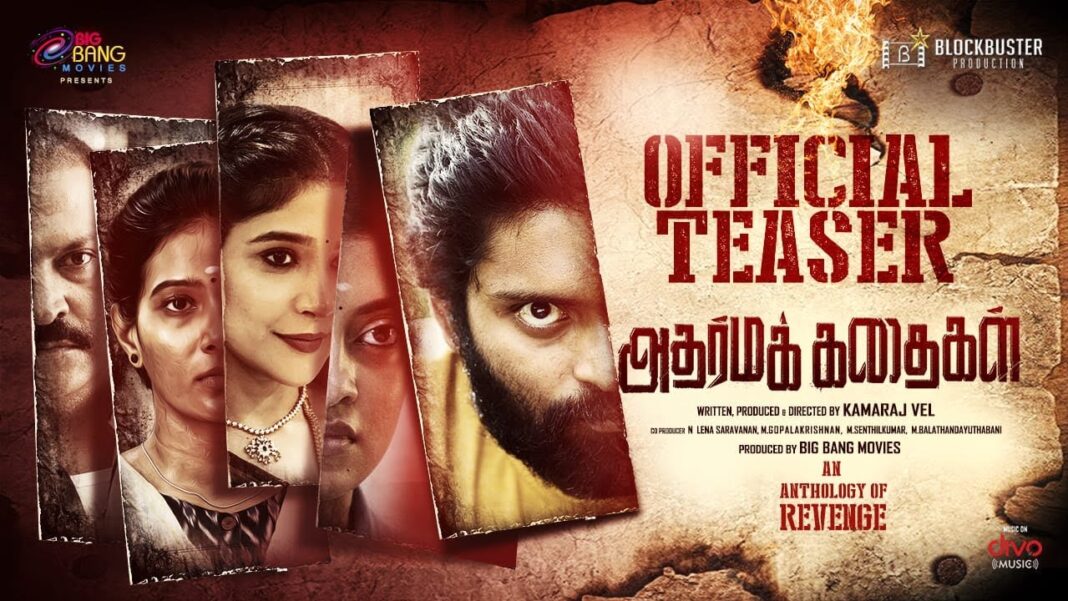Adharma Kadhaigal Movie Review: Blunt Writing Spoils the Revenge Plans
Synopsis:
“Adharma Kadhaigal” is an anthology film that delves into themes of revenge, self-harm, and forgiveness through four interconnected stories. Each narrative explores the consequences of seeking vengeance and the complexities of human emotions.
Review:
“Adharma Kadhaigal” is an ambitious attempt at portraying revenge through four distinct stories, but it struggles with execution due to inconsistent writing and storytelling. The film starts with the story of Nandhini, a nurse seeking revenge, setting a grim tone. As the narrative progresses, it introduces various characters, including a man drawn into online gambling and a woman betrayed by someone in power.
The film’s raw depiction of violence and cruelty, such as kidnapping, theft, and abuse, is meant to be impactful but often feels overwhelming due to the uneven quality of storytelling. In particular, the second story about a young man’s descent into criminality is marred by poor voiceover usage and a lack of character depth, making it hard to connect with his transformation from a happy individual to a conflicted criminal.
The second half of the film offers some redemption with two compelling stories that stand out due to better writing and nuanced performances. One involves a local rowdy’s death, where the identity of the killer provides an unexpected twist. The other focuses on surrogacy and forgiveness, where Divya Duraisamy and the late Poo Ramu deliver notable performances. These segments benefit from improved camera work and more engaging narratives, though they come too late to fully salvage the film’s overall impact.
Short Verdict Quote:
“Adharma Kadhaigal” is a fragmented anthology with intriguing ideas, but inconsistent writing and storytelling undermine its potential.
Subtitles:
- Introduction to Revenge: The film explores revenge through four different stories, starting with a nurse’s quest.
- Character Depth Issues: Inconsistent character development hampers emotional engagement, especially in the second story.
- Violent Depictions: The film’s portrayal of violence is raw but often overwhelming.
- Better Second Half: The final two stories offer more compelling narratives and performances.
- Missed Potential: Despite some strong moments, the film’s overall execution fails to deliver a cohesive and impactful experience.









